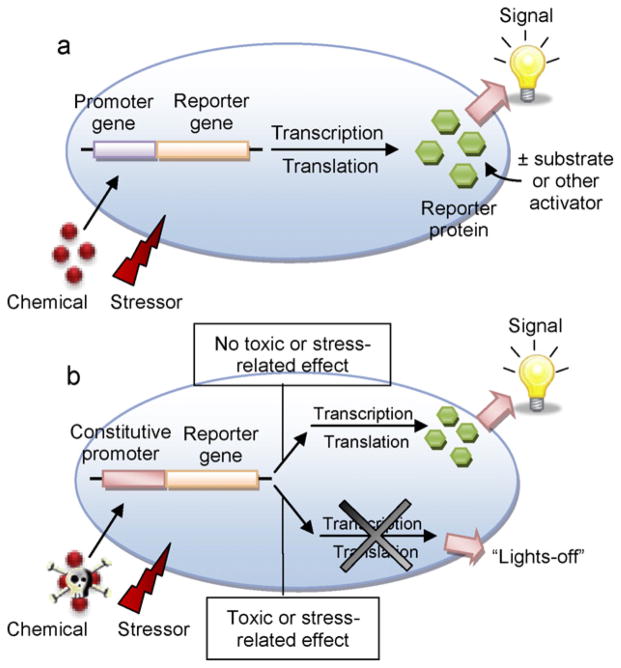Fig. 1.
The fundamentals of whole-cell bioreporter sensing. (a) A ‘lights-on’ bioreporter emits light when its promoter gene is activated upon exposure to a target of interest, and can function either specifically to identify a chemical or chemical class or nonspecifically to identify a toxic or stress-related cellular interaction. (b) A ‘lights-off’ bioreporter emits light continuously and signals the presence of a toxic chemical or stress-related interaction with its constitutive promoter via a reduction in its light emission intensity.

